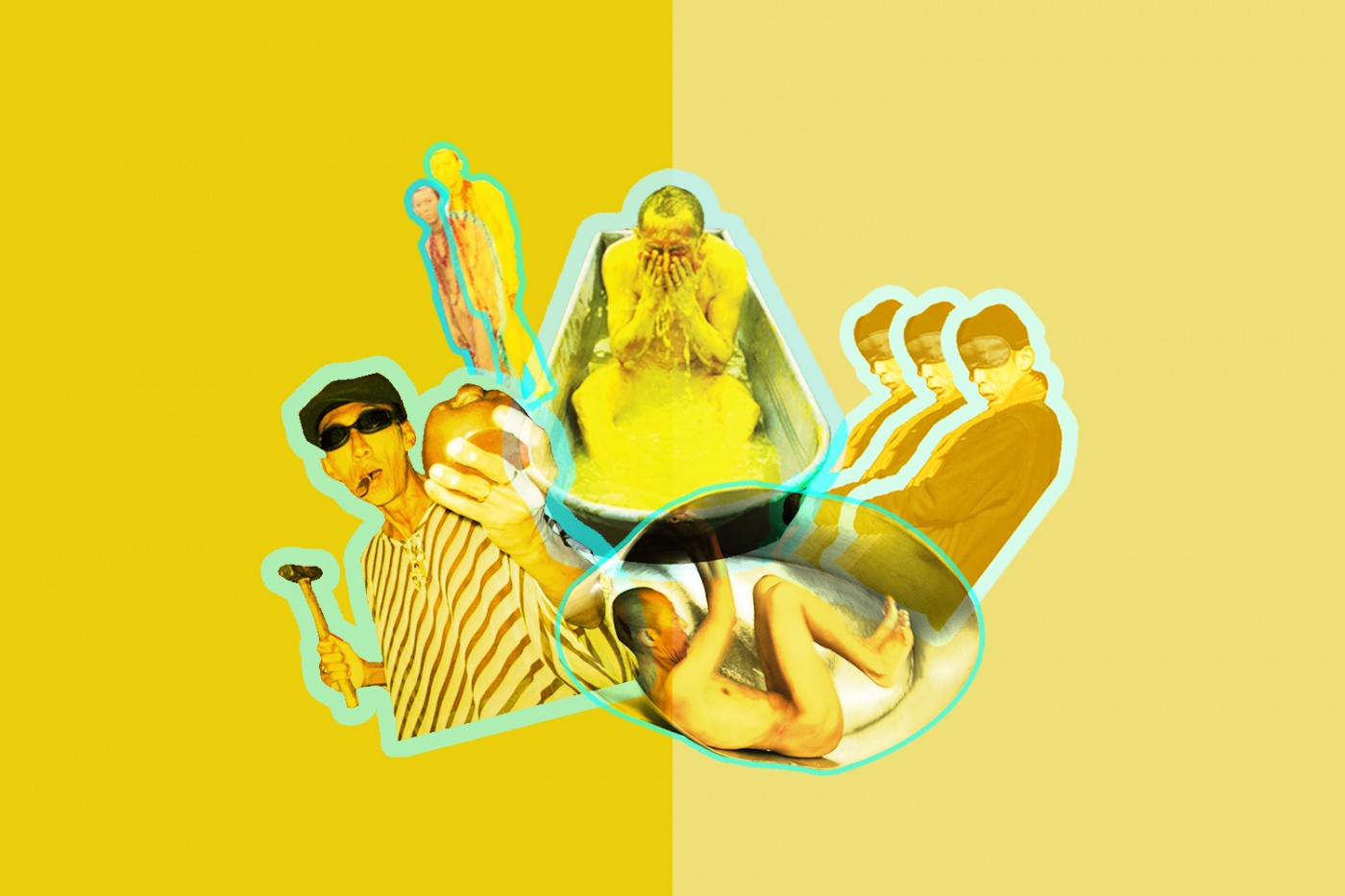A Tribute to Lee Wen, Singapore’s Pioneer Performance Artist
In memory of Lee Wen (1957 – 2019)
Our little Red Dot has had a complex, turbulent relationship with performance art. From 1994 to 2004, it was banned (or rather, banned from receiving funding), halting the growth of a community that had just begun to blossom. A dark, dismal and disconcerting time, many practitioners became reluctant to use the term or label themselves performance artists for fear of being shut down.
Yet, none of this fazed Lee Wen.
While the contentious art form was dying out, the Singapore-born performance artist continued to create, showcase and promote it with unstoppable audacity. His most iconic series, “Journey of a Yellow Man”, which began in 1992 and saw him dousing himself in bright yellow paint, lived on in the late 90s—an act of rebellion that ironically led to his conferment of the Cultural Medallion in 2005 post-ban.
A defining work of art that subsequently took him to Australia, England, Mexico, Japan, China, Thailand and India, the decade-long project (it ended in 2012) tackled the racialisation of the Chinese community, and the xenophobic history of the Yellow Peril that demonised and alienated Asians in the Western world in the 1880s. It employed and exaggerated the colour of his skin as a commentary on one’s identity.
Each instalment, which included installations and photography, featured the bald, nearly naked man in a lurid, gruesome yellow, at times coiled in a water tub in the foetal position, lying beneath a stack of books, creating art on the ground using chains and rice grains, or simply walking through urban cities.
“I’m already yellow. Why do I still paint myself yellow?” he asked in his artist statement for the Fukuoka Art Museum in 1994. “Yellow is the colour of the sun, the colour of the moon, the colour of the river that runs in the old country… It is also the colour of the persecuted and the oppressed.”
During the ban, Lee also debuted “Strange Fruit”, enwrapping his head and torso with a cluster of red paper lanterns, placing a token of Chinese culture in a strange, new bodily context.
Though the trailblazer was most known for his work as a performance artist, he was so much more than that. In his prime, he created a multitude of paintings, filling his notebooks with simple, abstract forms. Lee also built interactive art, the most prominent of which was Ping-Pong Go Round—a ping pong table in the shape of a donut that accommodates more than four players at a time.
As an art piece, it was meant to mimic the conference table and represent the broadening of dialogues. Yet, it’s also one of those rare artworks that invites and generates mass attention and appeal, bridging the gap between art and the public. Wherever the installation was showcased, people flocked and had fun with it.
Outside his role as an artist, Lee was a mentor. With the other luminaries of the nation’s creative scene, he groomed the younger generations of artists as an early member of The Artists Village (an arts collective founded by local contemporary artist Tang Da Wu in 1988). Eventually, he established his own enterprise to contribute even more to the scene. His brainchild, The Independent Archive (an art space and archival library), was thus born in 2012.
An unquestionable iconoclast who never ceased to question the status quo, it’s hard to believe he only entered the art scene at the age of 30 when he went from being a banker to a student at the Lasalle-SIA College of the Arts. Then again, who would have the guts to make such a life switch and willingly attend classes with a bunch of teenagers? But Lee stuck to his guns. Even after making a name for himself, he remained a man of utter humility, driven not by fame or fortune, but by freedom. Upon winning the Joseph Balestier Award for the Freedom of Art in 2016 (and $15,000 along with it), he didn’t follow the standard protocol of saying a few words of thanks and returning to his seat. He made a statement out of it, and split his award with two other nominees who he thought deserved the prize equally.
A visionary, a maverick, a pioneer, a proud misfit who marched to the beat of his own off-kilter drum… no amount of superlatives could do justice to a man who was, at his core, a warm, genuine and tremendously loving father, husband, brother and friend.
In his recent passing this March at 61 from a lung infection after a long struggle with Parkinson’s disease, I’m reminded that performance art is still a largely misunderstood practice—one plagued with a misinformed reputation for shock and awe (See: Marina Abramovic’s Rest Energy, and Josef Ng’s Brother Cane). I’m reminded of how we ought to confront the deeper issues at play beyond the surface performance, and realise the fundamental need for art and artists to hold a mirror up to society, and awaken us to a reality and a world that has deftly lured us into shackles and chains.
As Singapore’s godfather of performance art once wrote in an essay, “It is the nomadic journeys and endless battles that art revolves towards, a creative way of living with an awareness of our responsibility and a decision to choose freedom instead of the fatalistic acceptance of false security under the domination of selfish masters and domineering dictators. It is not that artists want to change the world, but the world may change us in ways that we are not willing to accept.”


